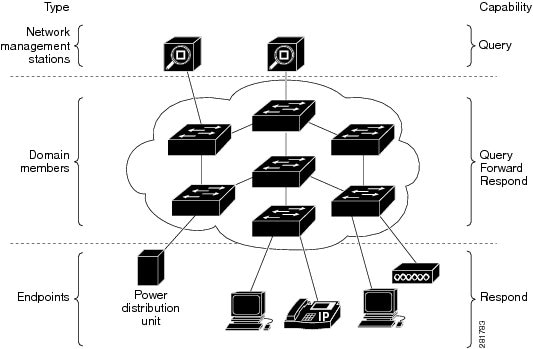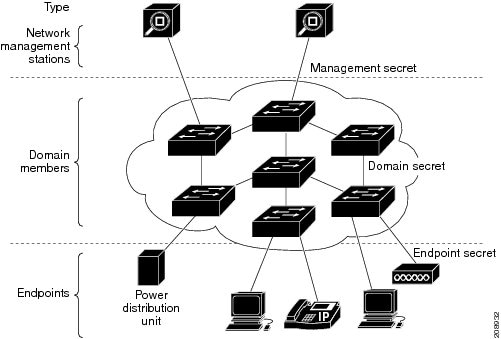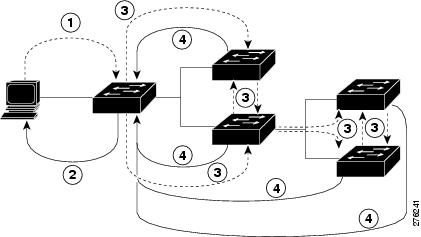A Cisco EnergyWise
domain is considered to be one unit of power management. The domain consists of
Cisco networking devices, Power over Ethernet (PoE) endpoints, and endpoints
running agents that are built using the software development kit (SDK) library.
This domain is similar to a network-management community such as a VLAN
Trunking Protocol (VTP) domain.
For example, if you
have a building with a core router, 10 access switches, and 400 endpoints, such
as phones, access points, and PCs, you can create an EnergyWise domain called
MyBuilding with the router and switches as domain members.
If you want to
implement power management applications on a management station and endpoints,
all the domain members must run Cisco EnergyWise Version 2.6 or later.
After you enable and
configure EnergyWise on the core router and access switches, the MyBuilding
domain configures itself. Neighbor relationships are set among the domain
members.
Each domain member
sets up a parent-child relationship with an attached endpoint. For example, an
IP phone (child) is connected to a PoE switch (parent), or a PC (child) is
connected to a router (parent).
After the domain is
set, a domain member can forward queries and control messages to other domain
members and endpoints. You can do the following:
-
Use SNMP or a
management station to query every domain member or endpoint.
-
Use the domain
member CLI to run an EnergyWise query to receive or set power usage
information.
-
Use a management
application, server, or domain member CLI to define power usage policies or
receive power usage information.





 Feedback
Feedback